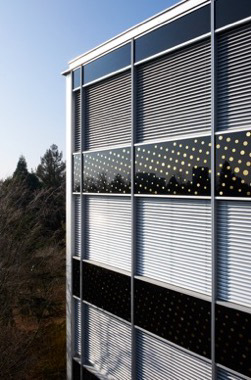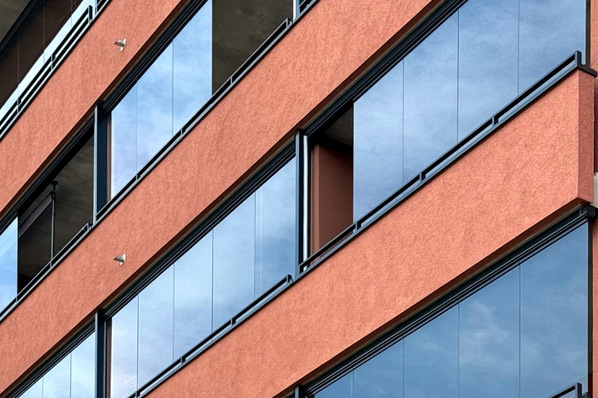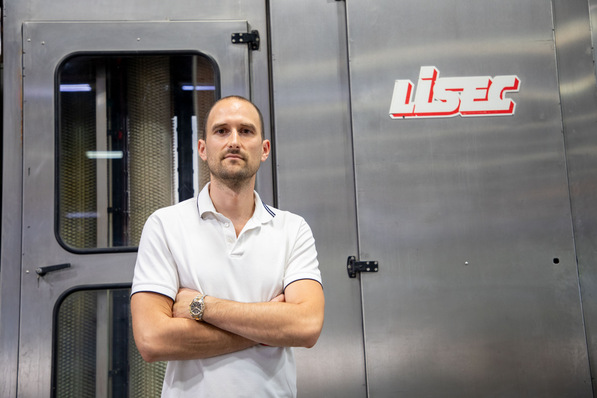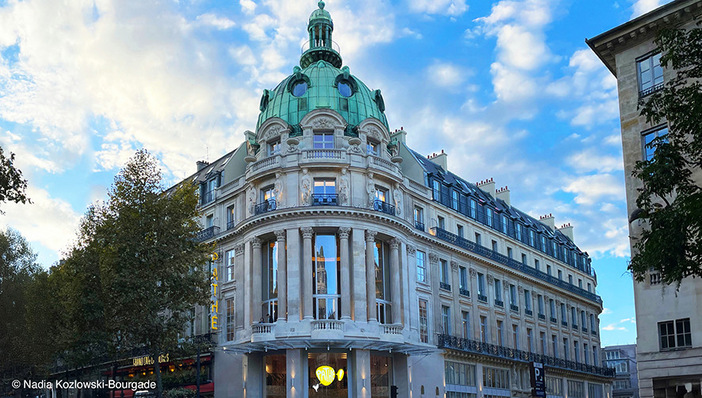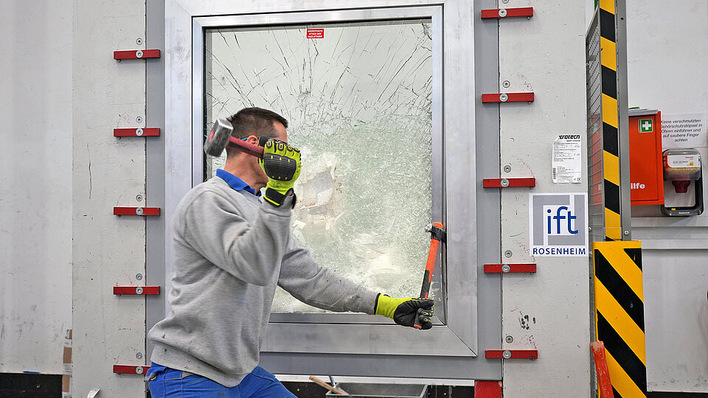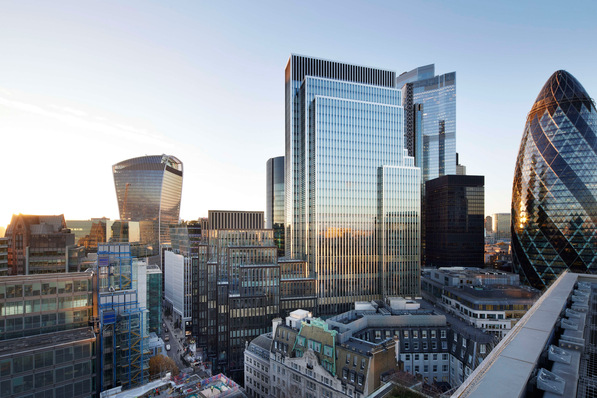Built at the beginning of the 1970s, the complex of school building and gymnasium has been given a new glass facade as part of an energetic refurbishment that is quite something: Round "piezo" metal discs are integrated into the façade glass, which, like the membranes of a loudspeaker, make the entire building sound - like flowing water. As a symbolic reference to the underground canalised river Flon in the Gleiche district, this idea goes back to a cooperation between the architects Chiché and the artist Rudy Decelière. In order to show off the installation visually, the architects, the artist and the team of experts from Glas Trösch came up with an ingenious solution.
The architecture of the school complex, built in 1971, is a typical example of the region's post-war modernism: in the 1960s, the Swiss canton of Vaud developed a school building programme that was intended to increase the supply of schools cost-effectively and in a short time in order to cope with the strong population growth. For this purpose, the Centre de Rationalisation et d'Organisation des Constructions Scolaires (CROCS) developed the system of rational construction, which became known by the same name in short form: The CROCS system was the basis for a total of 27 school complexes that were built from 1965 until the onset of the global oil crisis in the mid-1970s. Characteristic of the buildings, apart from the rectangular ground plans and the cubic shape of the structures, is their construction method: A self-supporting, modular metal girder structure forms the grid for all floors and rooms, the technical infrastructure and, last but not least, the facade with generous window areas. Equally prominent for the buildings of this era is their problematic energy balance: while energy aspects hardly played a role at the time, leaks and inadequate insulation of the building envelope are symptomatic of the architectural heritage.
Revitalisation with sound waves
When Chiché Architects from Lausanne won the contract for the energy refurbishment of the school complex in 2011 the energy renovation of the school complex in the Vallée de la Jeunesse district, they involved the artist Rudy Decelière in the planning of the facade from the very beginning. With Decelière had attracted the architects' attention with his poetic sound sculptures at the "Bex & Arts" triennial. the attention of the architects. The architects' concept for the renovation envisaged far more than simply improving the energy balance. The school complex was to gain in liveliness during and outside of the periods of use, the characteristics of the original the original CROCS system and, last but not least, to take up the genius loci in a new form.
See also this article: Things to know about adaptive facades
The aim was to meet these diverse requirements and, at the same time, to give the building and at the same time to give the building something completely new, the idea arose to build a new glass façade which also figuratively relies on something hitherto unseen: sound waves. They make the façade sound like the irregular murmur of flowing water - a symbolic reference to the original symbolic reference to the Flon River, which originally ran in the vicinity. This was canalised underground during the 1964 Lausanne Expo and disappeared from the cityscape. and thus disappeared from the landscape.
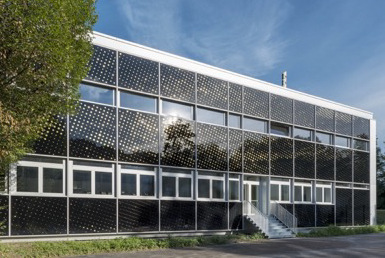
Claudine Garcia & Marcel Kultscher
Art and technology in harmony
After several tests with prototypes in collaboration with the experts from Glas Trösch, the technical implementation of the design concept was successful. experts, the technical implementation of the design concept for a new façade was successful. building into a synaesthetic experience. The laminated safety glass Swisslamex Colordesign from Glas Trösch proved to be the optimal solution for the construction of the façade elements: The round "piezo" metal discs are inserted between two layers of "metal discs are inserted between two layers of laminated safety glass and wired in such a way that they are each sound composed by Decelière. The approximately 13,000 "piezos" of various of different sizes are arranged in the individual elements in such a way that they elements are arranged in such a way that, in combination, they produce a stylised wave that extends over the entire building's 690 square metres of façade. square metres of façade. The additional colour foils in black inserted between the in black between the glass emphasise the golden shimmer of the "piezos" in the sunlight. in the sunlight. At the same time, the colour-stable glass ensures permanent privacy inside the building without compromising on the supply of daylight. In conjunction with the new the new façade insulation, the symbiosis of sound and image set in glass also contributes to a better energy energy balance and, last but not least, also ensures a greater sense of well-being for the students - whether they are whether they are studying or doing sports.







